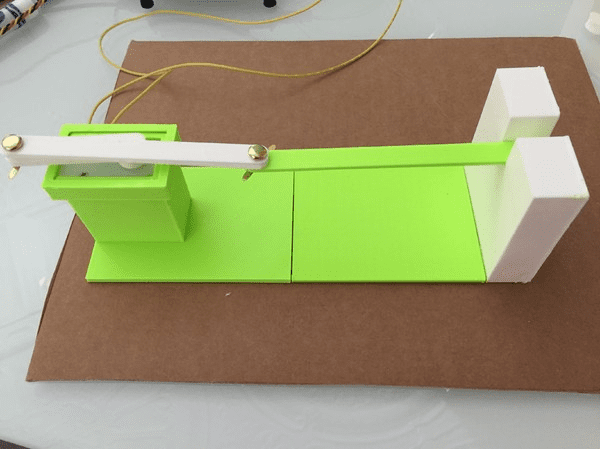Register to receive free access to all teacher materials.
Creating Waves with a Gear Motor
Create a prototype to demonstrate how a motor can be used to produce waves.
Programming Language
Scratch
Subjects
Math, Science
Grades
4-5, 6-8, 9-12
Free Teacher Materials
Objective & Learning Goals
Students will:
- Use Hummingbird to create a robot to show how a motor can create waves.
- Explore how changing the speed of the motor affects the waves.
Standards
This inspiration for this project was PS4-A in the NGSS standards, but this system could also be used to address Common Core math standards that focus on trigonometric functions (HSF.TF.A.1, HSF.TF.A.2, and HSF.TF.B.5) and visualizing data (HSS.ID.B.6). This project could be particularly useful in helping students make the connection between the unit circle and the shape of the sine and cosine functions, as well as how frequency changes the shape of these functions.
Photo Gallery
This project was developed in response to disciplinary core idea PS4-A Properties of Waves in the Next Generation Science Standards. We wanted to create a prototype to demonstrate how a motor can be used to produce waves. A gear motor was connected to a system with a crankshaft, connecting rod, and piston. The distance sensor was used to measure the position of the piston as it moved, and this information was plotted to the screen using Scratch. STL files are available to 3D print the parts for this project.
The gear motor rotates, but the crankshaft system converts this rotation to the linear (back and forth) motion of the piston. Plotting the position of the piston creates a wave like the one shown below.

Changing the speed of the gear motor changes the frequency of the wave.

Different crankshafts can be used to change the amplitude of the wave.

The parts for this project can be printed using a 3D printer. Click on the image to go to download the files.


